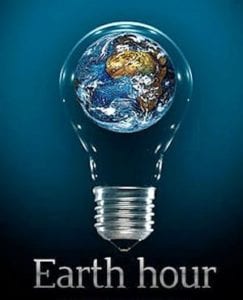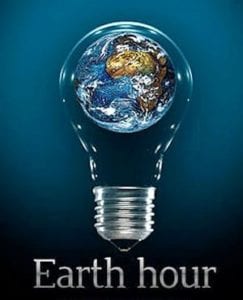South Africans saved an average of 515 MW during this year’s Earth Hour according to Eskom. “South Africans showed their power to save electricity when they switched off their lights for Earth Hour from 8:30pm to 9:30pm this past Saturday evening, saving an average of 515 MW during the hour,” said the power parastatal. The 515 MW saved is enough to power a city the size of Bloemfontein for that hour. As part of its support for the Earth Hour campaign, Eskom measured the reduction in electricity used during the hour against typical consumption for this time on an average Saturday evening. Earth Hour is an annual global event, initiated in Sydney, Australia in 2007 to encourage people to switch off lights and unused appliances for an hour as a symbolic demonstration of their commitment to action against climate change.
Since its inception, Earth Hour has grown to engage more than 7000 cities and towns worldwide, and the one hour event continues to remain the key driver of the now larger movement.
“We would like to encourage people to take action beyond this one hour and to make energy efficiency and environmental conservation part of their daily lifestyles. “People are encouraged to reduce their energy consumption every day by using electricity efficiently, switching off all non-essential lights and household appliances,” said Eskom. The power utility said commercial customers, particularly shopping centres and office blocks, can also make a big difference by switching off non-essential lights and not leaving office equipment such as photocopiers and computers in standby mode after hours. In 2015 South Africans saved a total 575 MW of electricity – enough electricity to power a city the size of Polokwane – during Earth Hour. Meanwhile the power utility said it is progressing well with the maintenance of its power generating plant whilst supplying the country’s electricity needs.








